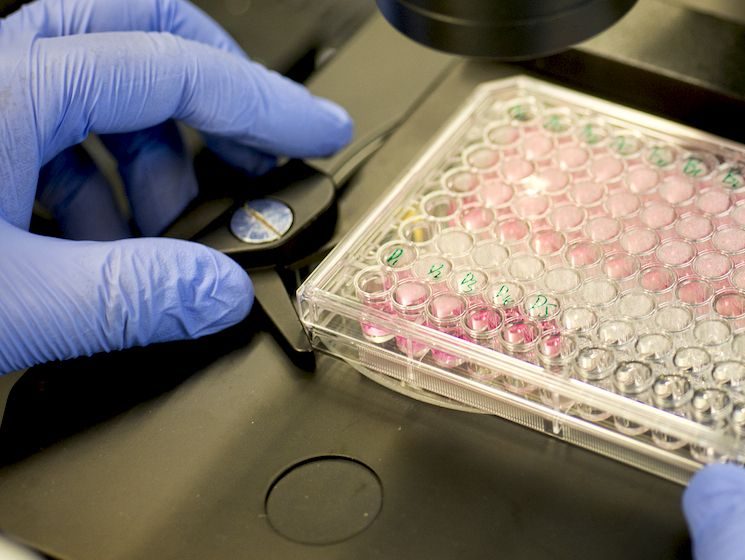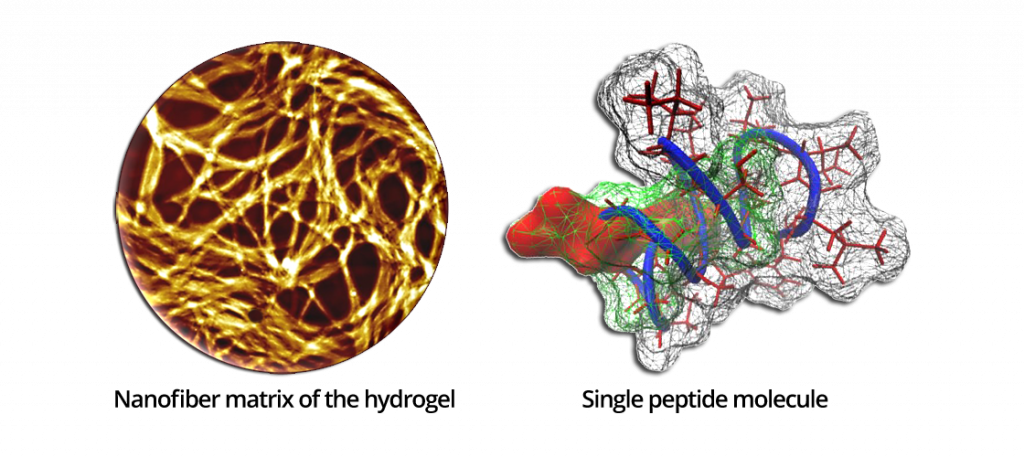PepGel: Home for Cells and Beyond
Our advanced technology features a magical self-healing hydrogel and its derived hybrids that are used in several important life science and medical products.
Platform
Our advanced technology features a magical self-healing hydrogel and its derived hybrids that are used in several important life science and medical products. This hydrogel easily transitions between liquid and gel states and regenerates its structure on its own. The hydrogel is stable in neutral pH and remains in gel formation through a wide range of temperatures, from 2° C to 80° C. PepGel PGmatrix and its hybrids are designed for advanced manufacturing of 3D cell cultures and scalable physiological spheroids (3D colonies) with nearly 96% representation of in vivo bioinformatics. These are perfect starter materials for applications in drug discovery, toxicology screening, bioprinting, regenerative medicine, biomedical therapeutics, and wound healing. Furthermore, the PGmatrix-hiPSC hybrid system is the leading biotool for scalable high quality somatic cell manufacturing (e.g., hepatocytes) from human induced pluripotent stem cells (hiPSCs).

Molecular Structure
PepGel’s hydrogel is a synthetic peptide-based material with 19 amino acid residues. The primary structure of the peptide was carefully designed from a combination of spider silk and the trans-membrane segment of the human muscle L-type calcium channel. The peptide has a great balance of hydrophobic, hydrophilic and charged segments which contribute to the material’s stability in neutral pH and different temperatures.

The magic of self-healing hydrogel
The mechanical strength of the hydrogel presents a special shear-thinning and rapid recovery property, which allows this hydrogel system to be delivered as an injectable material by syringe or pipette multiple times. Other stunning uses include:
Sensor Design
• Changing Orientation
Use with Microscopic Probes
• Optical Coherence Tomography
• Partial Wave Spectroscopy
Cell Releasing Agent
• Novel filtration methods
Imaging Phantoms
• With or without nanoparticles
• Photo-acoustic spectroscopy
Key References
- Peptide Hydrogelation and Cell Encapsulation for 3D Culture of MCF-7 Breast Cancer Cells, PLOS ONE, 2013, e59482.
- Design of a shear-thinning recoverable peptide hydrogel from native sequences and application for influenza H1N1 vaccine adjuvant, Soft Matter, 2011, 7, 8905-8912.
- Structural Transformation and Physical Properties of a Hydrogel-Forming Peptide Studied by NMR, Transmission Electron Microscopy, and Dynamic Rheometer, Biophysical Journal, 2012, 103, 979-988.
- Rational Design of Responsive Self-Assembling Peptides from Native Protein Sequences, Biomacromolecules, 2010, 11, 3390-3394.
- Peptide nanofiber hydrogel adjuvanted live virus vaccine enhances cross-protective immunity to porcine reproductive and respiratory syndrome virus, Vaccine, 2013, 31, 4508-4515.
- Design and Demonstration of a Pumpless 14 Compartment Microphysiological System, Biotechnol. Bioeng. 2016;113: 2213–2227.